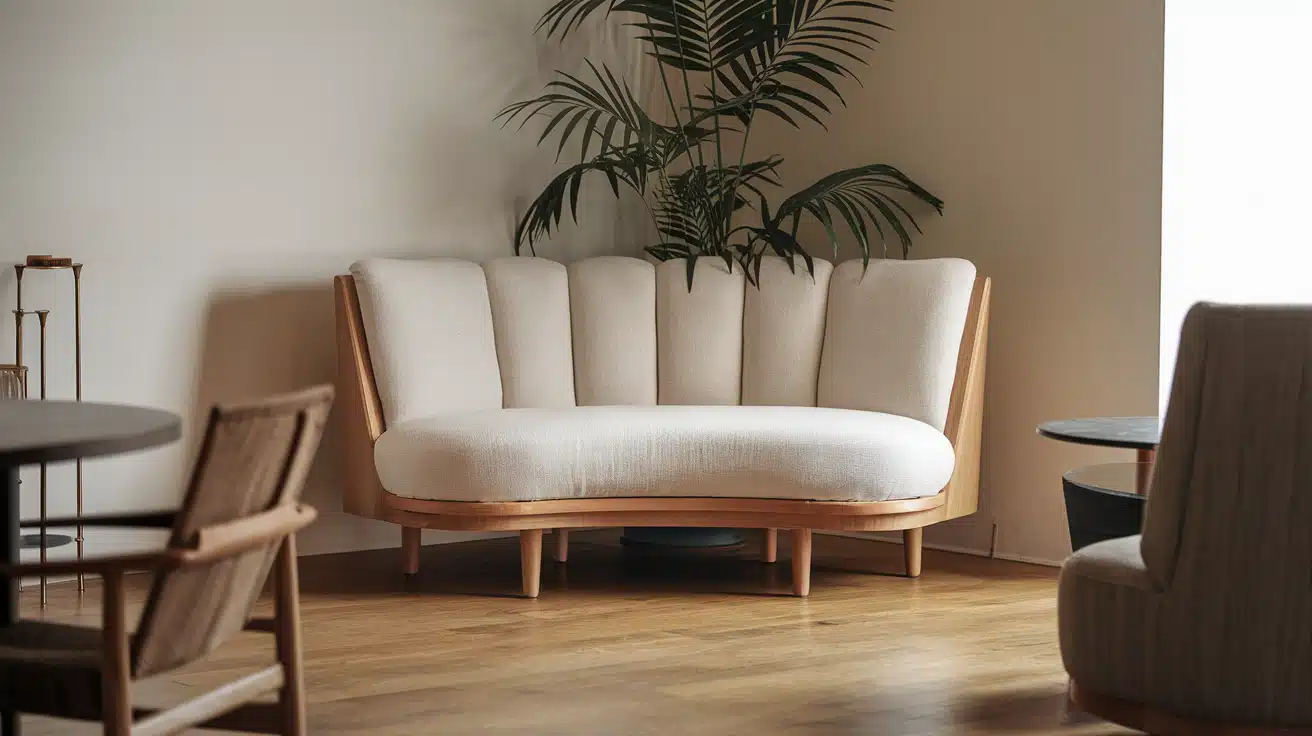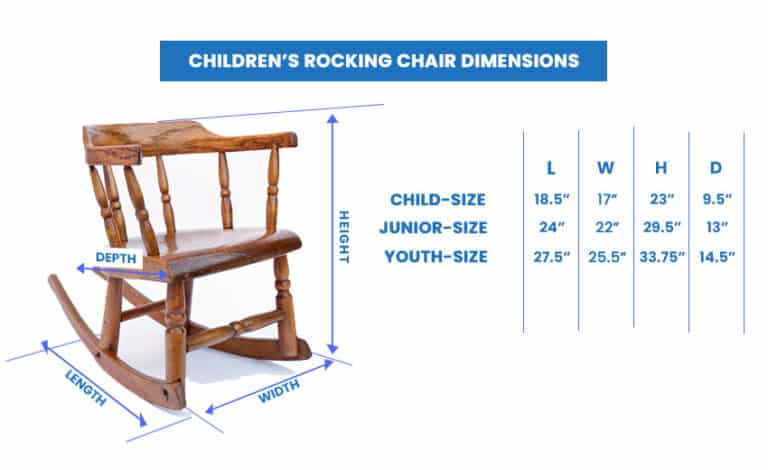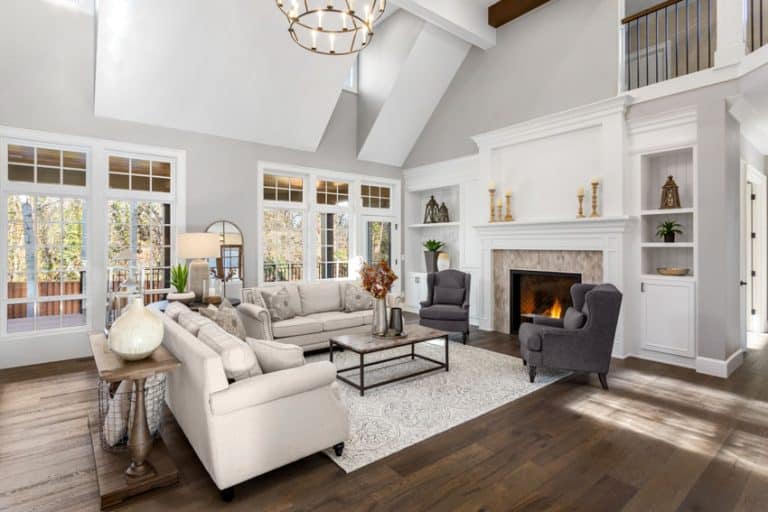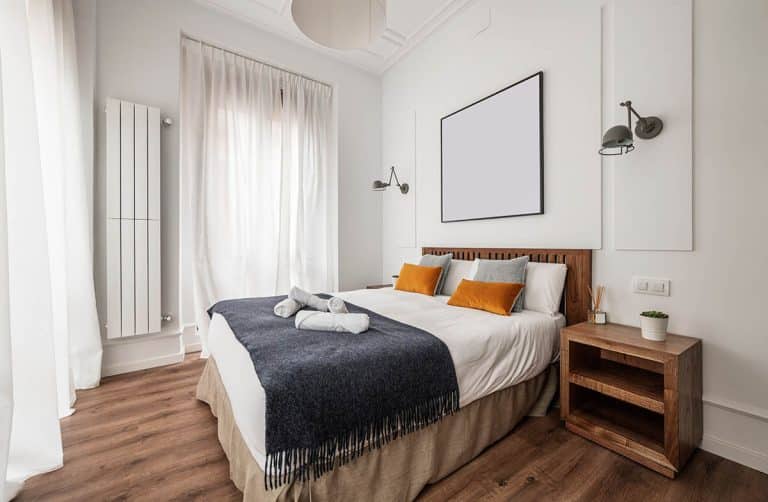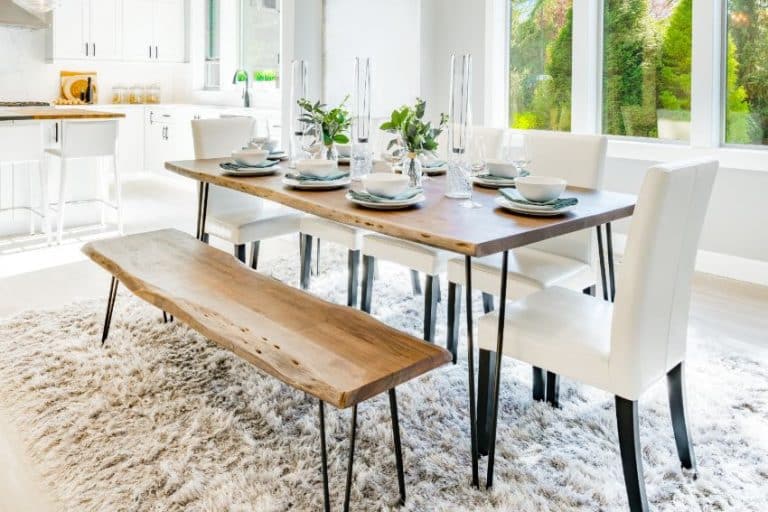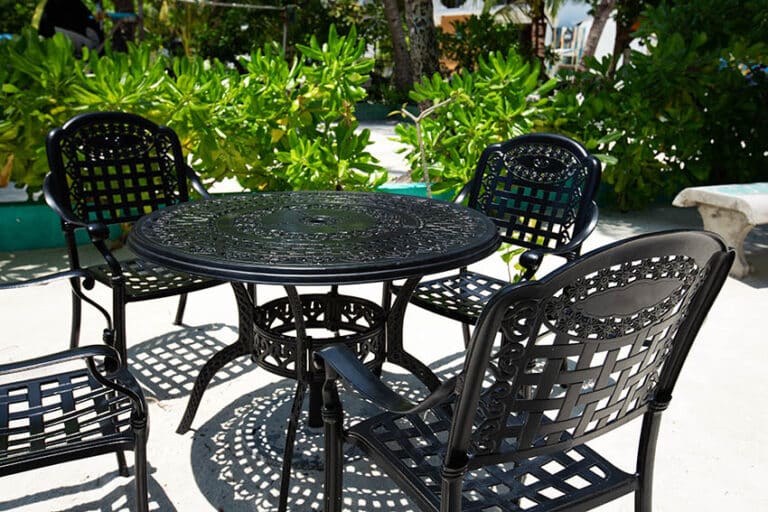Top 14 Settee Design Styles for Classic and Contemporary Spaces
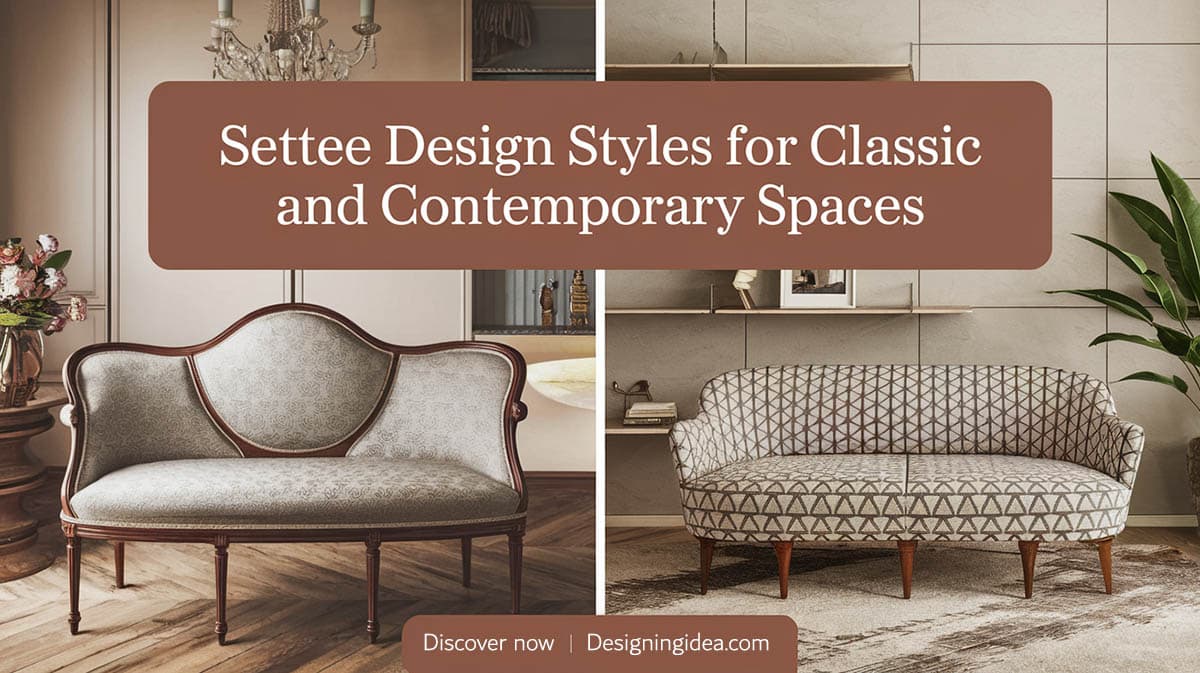
The majority of settees have a small footprint. Settees lend an air of refined elegance to any room they are placed in, thanks to their lean, exposed legs and streamlined design. You have the option of selecting from a variety of design styles, including one that has either a standard or curved shape. A settee can seem more like a bench or a small sofa. While some settees can recline or transform into double or queen-sized beds, others perform the job of a loveseat’s more streamlined relative. You can select homey, laid-back, and comfy settees or ones that are more fitted and include minimum detailing for the look of a high-end boutique hotel.
Types Of Settee Designs
The 1700s saw the introduction of settees, quickly becoming an essential form of seating. Historically, settees were more formal and smaller versions of couches that eventually evolved into what is now often referred to as the sofa. Due to the more formal living environment in the 1700s, they were the primary seating option.
Sofas continued to be standard pieces of furniture throughout the 19th century. Because they offered a comfortable place for a young couple to talk to one another and become acquainted, you could always find them at the homes of more affluent individuals who hosted parties regularly. As people’s conceptions of what constituted comfortable furniture evolved and manufacturers responded by stuffing furniture more densely, settees gradually became less popular as household furniture. Here are some of the most popular options.
Settee Couch
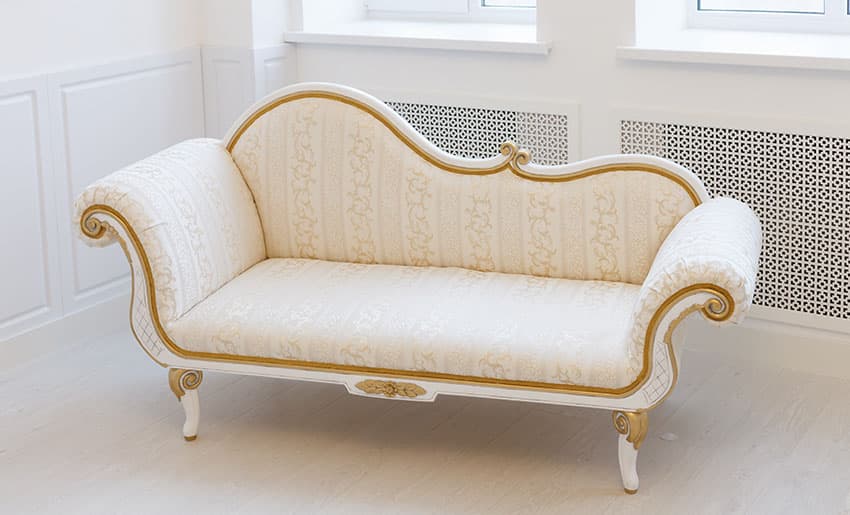
An upholstered seat with a back and armrest (occasionally upholstered) meant to accommodate two or more persons in a sitting or reclining posture is known as a settee couch.
Settee Bench
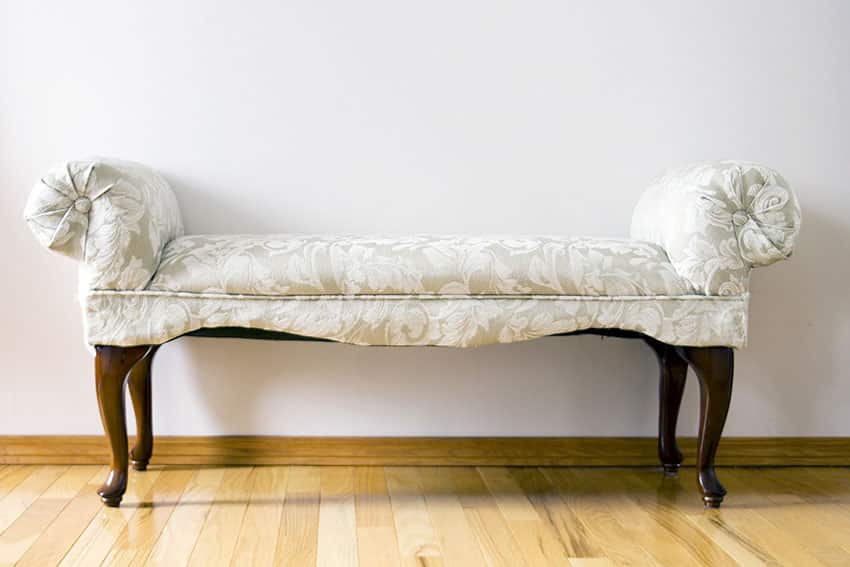
When would you call a settee a bench? A bench is another style of settee with an open area between the back and the seat. If there is no upholstery on it, you should unquestionably refer to it as a bench; if there is upholstery, you should continue to refer to it as a settee.
Dining Settee
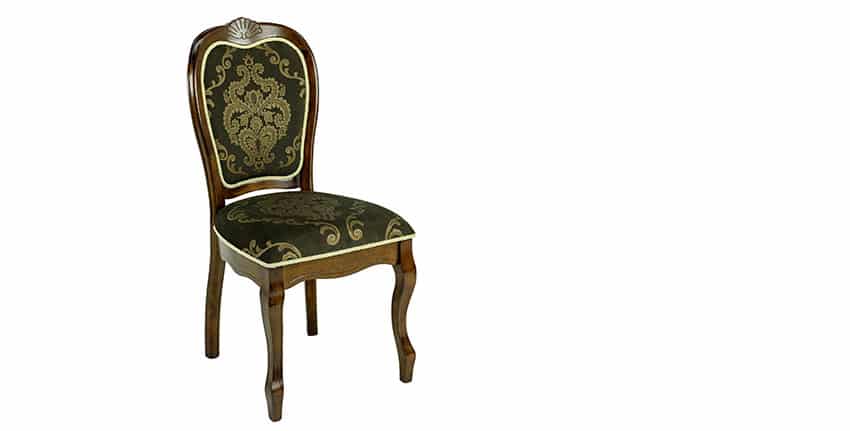
When you pull up a comfortable dining settee to the edge of your dining room table, you make it possible for more people to sit at the table at once than with individual seats. It encourages your guests to unwind and linger during lengthy dinner parties. It is also a choice that is very cost-effective.
Settee Chair
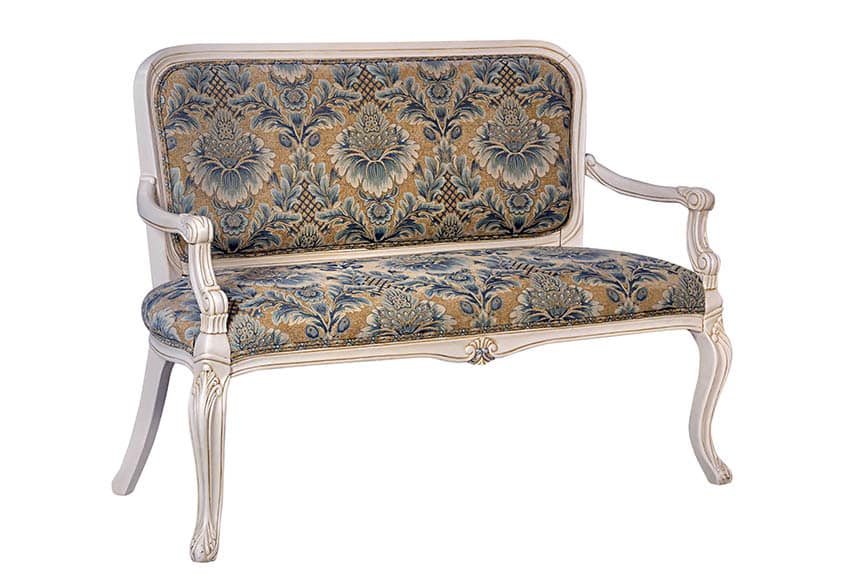
A settee chair is a sort of seat meant for a single occupant. It consists of one or more legs, a seat that is either completely flat or slanted to one side, and a backrest.
Chaise Settee

A chaise settee is an upholstered sofa, shaped like a chair and long enough to prop one’s legs up. Another name for it is a chaise lounge. The term “long chair” is the English equivalent of the modern French term “chaise.” It refers to any long, reclining chair in modern French interior design dictionaries.
In modern interior design, a chaise settee is most frequently attached to the end of a sectional or sofa. However, it can also function in some homes as a freestanding long chair. Providing a place for household members to kick their feet up and relax more profoundly in a position between sitting and lying down contributes to a living room’s overall aesthetic and atmosphere.
Armless Settee

See this settee at Amazon [sponsored link]
Fabric is the go-to material for the upholstery of an armless settee. Traditionally, it has a streamlined appearance (when viewed from the side, it resembles a rigid “L” shape with legs).
High Back Settee
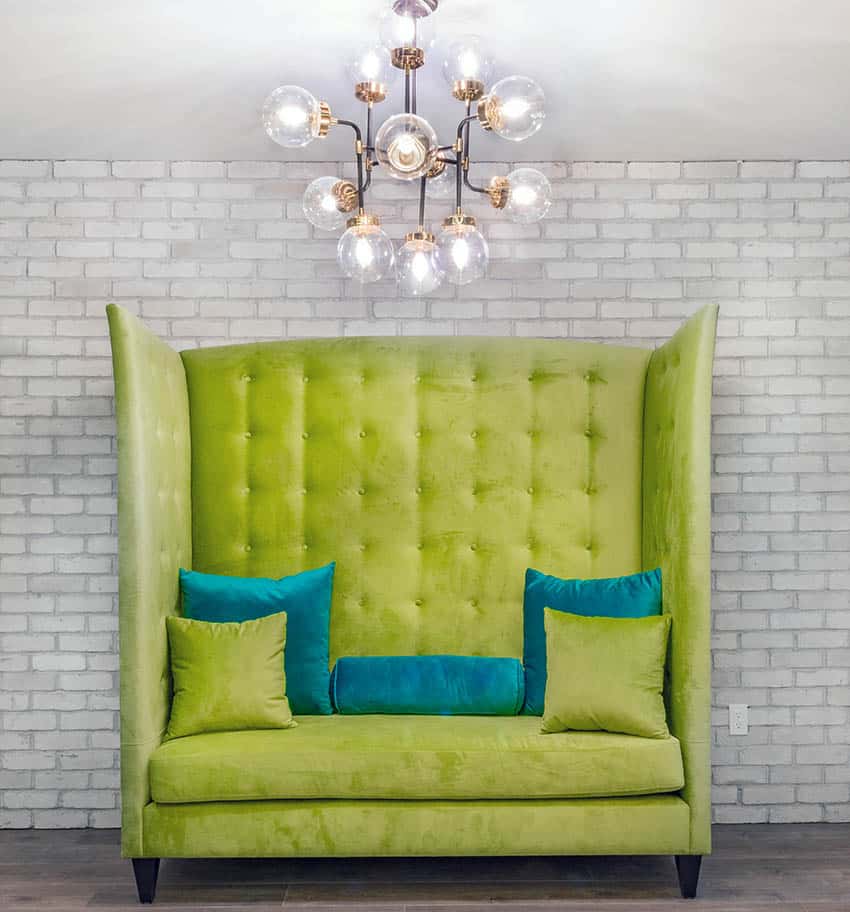
High-backed settees have a back that is significantly higher than the back of a conventional settee. As a result, they provide excellent support and comfort for the user’s head and neck, which enables them to rest completely.
Round Settee
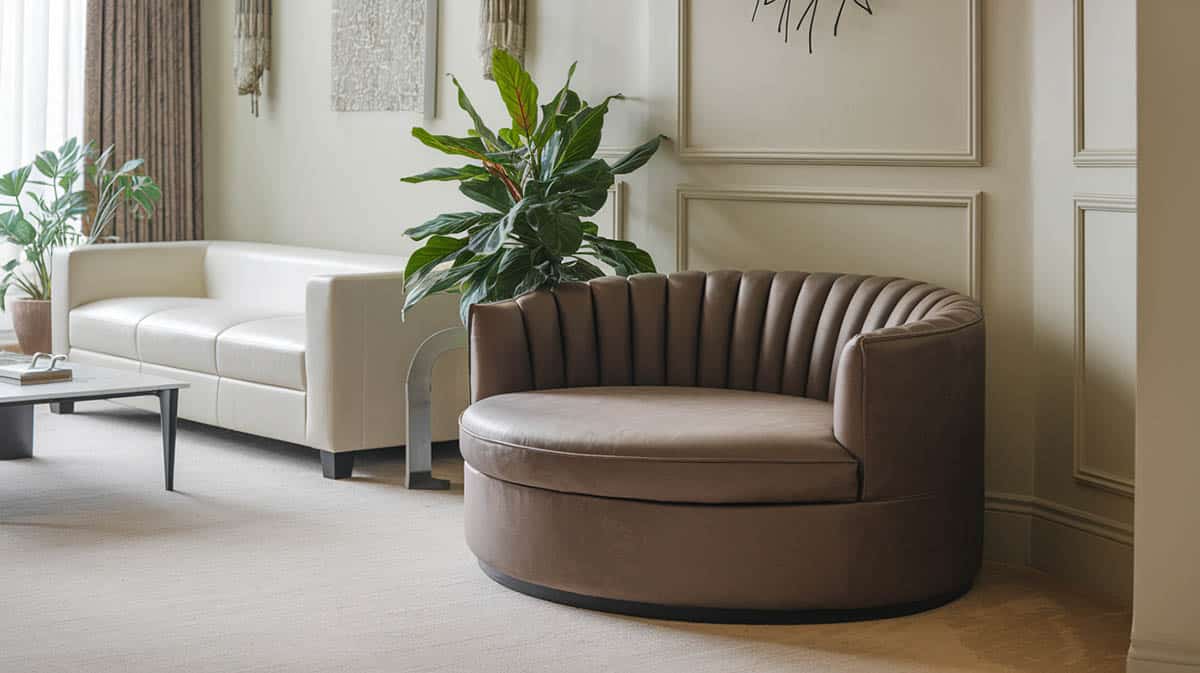
It is traditionally a Victorian ottoman-type couch that is circular and upholstered with a central backrest; it is also frequently referred to as a discussion seat. It features three or four-seat divisions and a center cone that acts as a backrest. Nowadays, there are many contemporary styles, some which have a rounded backseat.
Curved Settee
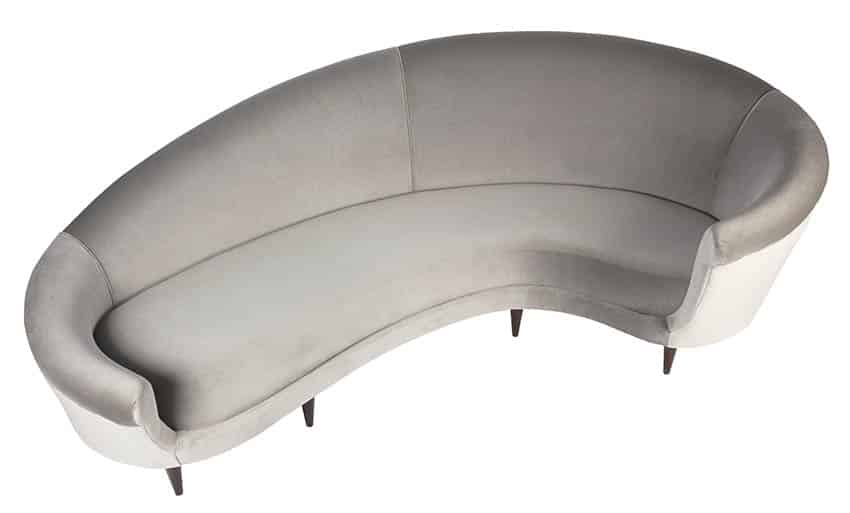
The Curved settee is a tuxedo-style settee with curved corners, a single down-wrapped seat cushion, three down-wrapped, removable back cushions, and two bolsters.
Corner Settee
Corner settees offer a significant benefit by transforming an unused space in your room into a pleasant gathering spot that can accommodate several individuals with complete ease. In addition, compared to standard settees, they have a distinct advantage regarding the comfort level provided by the corner seat.
Victorian Settee
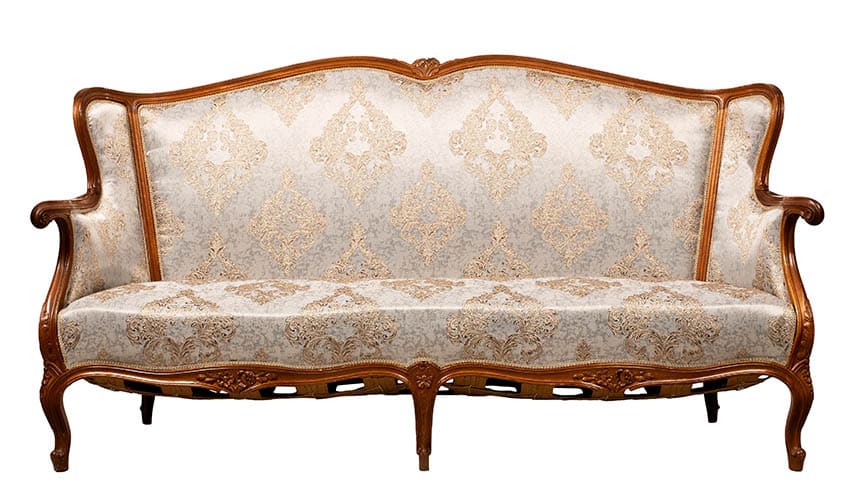
The term “Victorian settee” refers to settees that were popular throughout the Victorian era of the 19th century. Some of these items may be antiques that underwent repairs. In contrast, others are reproductions of furniture from the past that served as inspiration. Antique Victorian settees, particularly those well-preserved, can fetch very high prices on the secondary market. These items have veneers in flame mahogany, walnut, and rosewood for decorative purposes.
Modern Settee
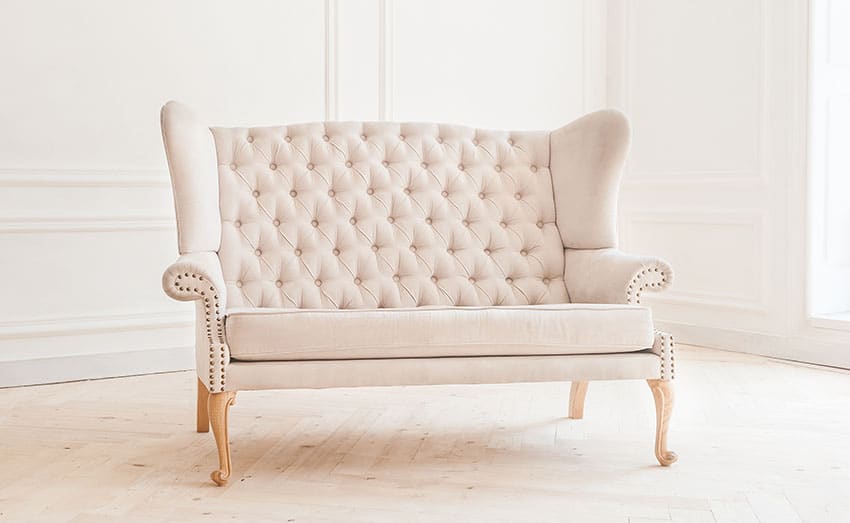
The style of a contemporary couch is all about cleaner lines and fewer decorative accents. The emphasis is on angles, geometric shapes, and crisp lines. Therefore, straight lines and edges are among the most prominent characteristics of modern design. The room has a bold attitude thanks to the presence of settees with squared-off edges and angular accents.
Bedroom Settee

Adding a bedroom settee, which may provide additional seating for rooms of any size, is a crucial component in making the area feel cozy and welcoming. You should use the private areas in your house for activities more than just sleeping. Placing a settee in the bedroom may turn it into a spot where you can unwind, read, or watch television.
Tufted Settee

What exactly is it that a tufted settee is? The effect of tufting is accomplished by firmly stitching together multiple layers of fabric to create a pattern, resulting in indents distributed uniformly across the surface. These depressions are traditionally closed up with a button, a knot, or a ribbon; however, a more contemporary approach is to leave them unadorned.
Settee Materials To Use And Why
When choosing the best materials for your settee, it is essential to consider the traits of each material. How those characteristics fit in with your individual needs, and how you style your home.
Leather – Leather has a reputation for being extraordinarily long-lasting and advanced compared to other materials on the market today. The fact that it can resist the wear and tear of regular life while being relatively simple to clean makes it a popular choice among individuals who have children and animals.
Velvet – Velvet upholstery is sturdy and long-lasting, making it ideal for settee upholstery. Although velvet is currently in style, it is a classic fabric with a lux appearance.
Fabrics – Your sofa can have many different kinds of fabric. Each variety possesses distinctive qualities, including resistance to stains and fading, sturdiness, or fashion.
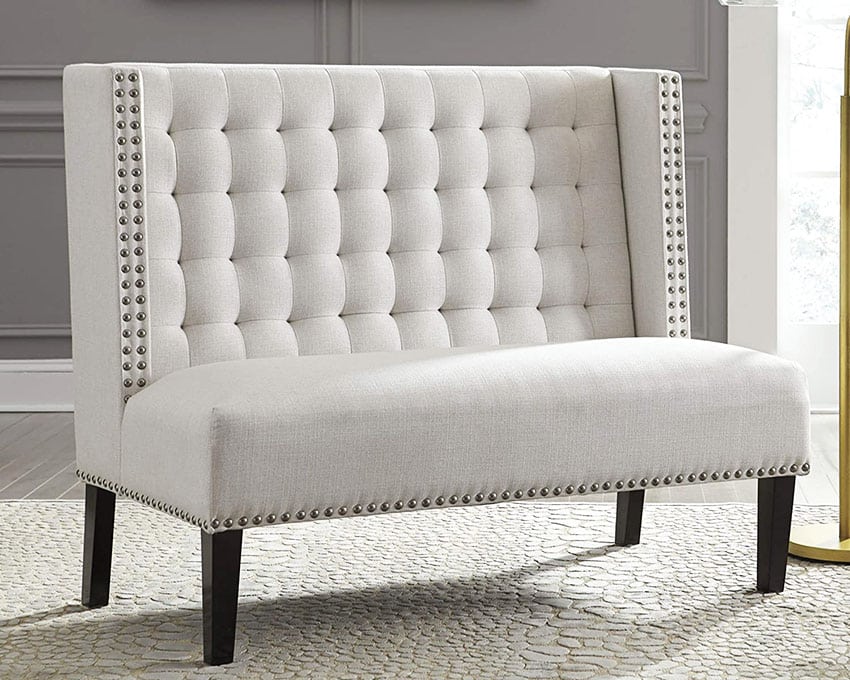
See this settee bench at Amazon [sponsored link]
The fabric of a settee will affect how it wears over time. Researching and getting familiar with the various possibilities might help you discover a piece of furniture worth your spending.
Linen – Due to its propensity to wrinkle and stain, linen is a material that should be limited to usage in settings with little foot traffic or restricted to adults’ use only.
Wool – Wool is an excellent material since it is resistant to stains, wrinkles, fading, and pilling. Wool can also be combined with synthetic fiber to create a material that is even more stain resistant and simple to spot-clean.
Silk – Silk is a very fragile and supple type of material. Because of its fragility, it should be in a more formal area. If it gets dirty, it should be cleaned by a professional.
Cotton – Cotton has excellent resistance to wear and tear, as well as to fading and pilling. However, it does not have the same resistance to wrinkling and soiling as the other option. Cotton can boost its resilience and produce a fabric suitable for a home with children and pets when combined with other fibers.
Synthetic fabrics are man-made items that are supposed to replicate natural fibers and have a stain-resistant characteristic. Thanks to technology, some synthetic fabrics may look like natural ones.
Polyester – It is common practice to combine polyester with other fabrics to produce an upholstery material resistant to wrinkling, crushing, and fading.
Nylon – This fabric is known for its resistance to stains and status as one of the most durable for upholstery. It helps prevent this fiber’s fading, crushing, and pilling when blended with other materials.
Acrylic – This manufactured fabric was initially conceived as a wool substitute and possessed excellent resistance to wear, wrinkling, soiling, and fading.
Olefin – Olefin can withstand scratches, stains, and exposure to sunlight and chemicals. It is an excellent choice of material for furniture meant for frequent use.
Vinyl – It is a fantastic substitute for leather that can be purchased at a lower cost while maintaining durability compared to leather.
Wooden – It’s hard to go wrong with long-lasting wood settees. Wood was the traditional material of choice for furniture, and there are many different styles and design components that date back centuries. Hardwood settees add a touch of nature to the space, enhancing its aesthetic appeal.
The wood grain captures the viewer’s attention, and the traditional allure makes the room’s interior design cozier. Wood is the most environmentally friendly material for settee construction and has the most classic appearance.
Wicker – You can make wicker out of almost any material, natural or manufactured, as long as it is malleable and resilient enough to weave into a settee. In most cases, you won’t even need seat cushions for short periods when sitting on wicker settees because it’s already sufficiently comfy.
However, a few essential advantages come with seat cushions with your settee. Cushions improve the appearance of the sitting arrangement while also contributing to its comfort and aesthetics.

